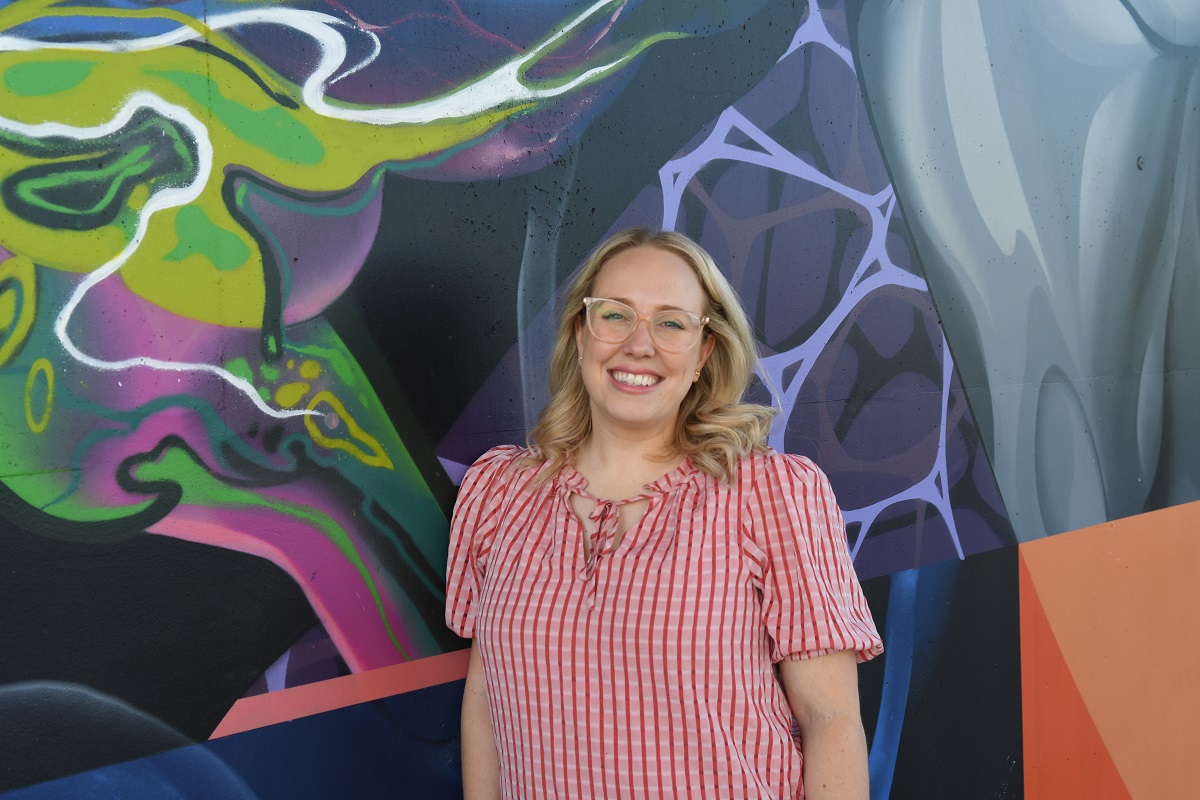
Announced as a Superstar of STEM, Dr Kelsi Dodds is a passionate advocate for promoting STEM to Australia’s younger generations. We asked about her research into uterus physiology, and she even confessed to a ‘cringeworthy’ leisure pleasure.
What is your role here at Flinders?
I’m primarily a Lecturer in the College of Medicine and Public Health, where I coordinate Fundamental Neuroscience for second-year undergraduate students and teach across other Neuroscience, Physiology and Medical Science Skills topics. This involves lecturing, tutoring, and practical demonstrating.
I’m also an Early-Career Researcher, where I lead research on uterus physiology in collaboration with Professor Nick Spencer’s laboratory (Visceral Neurophysiology) within the Flinders Health and Medical Research Institute (FHMRI). The goal of our lab is to determine how internal organs work (such as the gut, bladder and uterus) and how they send sensory information to our brain. This includes such fundamental questions as: How do our stomachs know when they are full? Why does our bladder tell us to have a nervous wee? What is it about chilli peppers that upsets our bowels?
In addition to teaching and research, I’m a steadfast advocate for the Early- and Mid-Career Academic (EMCA) community and people and take on caring responsibilities in the College. I co-chair our EMCA Community of Practice (a team dedicated to support the unique needs of EMCAs from all career backgrounds) and I co-lead the Parental Leave and Caregiving Working Group, which aims to streamline information and opportunities available for people with caring responsibilities, including peer mentorship.
Tell us about your research.
My research mostly examines the anatomy and function of sensory nerves innervating the uterus. To do this, I use a range of cutting-edge research tools, including genetically engineered mouse models, optogenetics and novel surgical techniques to tease apart different types of sensory nerves. A lot of these experiments require microscopy, which I love. We have some highly sophisticated microscopes available at the Flinders Microscopy and Microanalysis Facility, and these allow us to take very pretty, detailed images.
What led you into this field?
Ever since I studied Biology in high school, the human body has fascinated me. We are truly amazing machines. I therefore decided to do an undergraduate degree in Health Sciences at the University of Adelaide, and sort-of fell into academia – it was certainly not a career I thought I would end up in. Throughout my degree, I was inspired by my teachers and their enthusiasm for medical research, so at each step I took on more topics that included research projects as part of the curriculum.
In my Honours year, I examined contraction patterns of the uterus throughout the reproductive cycle in mice. This ignited my passion for research into female reproductive organ health and disease. I then undertook a PhD, exploring how cells in the spinal cord (glia) can influence pain associated with endometriosis – a condition in females where the womb lining forms ‘lesions’ in the pelvis. Throughout this time, I was fortunate to interact with pelvic pain patients, hearing of the daily burden their conditions had on their lives. For many of them, current treatments for pain were (and still are) too invasive or ineffective.
Considering this desperate need, I now study pain-signalling pathways from the female reproductive tract – to hopefully provide the foundational information needed to develop new, innovative treatment options for pelvic pain.
What do you love most about your role?
These sound like total clichés, but they really do make me happy. I work with an amazing team of people – everyone is so friendly, supportive, and make even the most challenging days a joy. It excites me to see my students grasp tricky concepts, and when they ask thoughtful questions, it’s reassurance that I must be doing something right. Working in science means making new discoveries everyday – things that no one else has ever seen before – so how lucky am I to be doing this?
What are you most proud of?
I was thrilled to be selected as a Science and Technology Australia (STA) Superstar of STEM 2023-2024. This prestigious program aims to promote the visibility of diverse women and non-binary STEM experts in the media, to help inspire the next generation of young Australians to take up a STEM career. I really look forward to visiting schools and talking to the public about my research and the amazing experiences you can have in a STEM career.
How do you spend your spare time and relax?
Most of my ‘spare’ time is spent wrangling my busy two-year-old! Besides raising a young family, I love gardening (if I didn’t work in science, I’d probably be a floral designer), plus going to new restaurants with friends and, dare I say it, I’m guilty of indulging in the latest cringeworthy reality shows.

